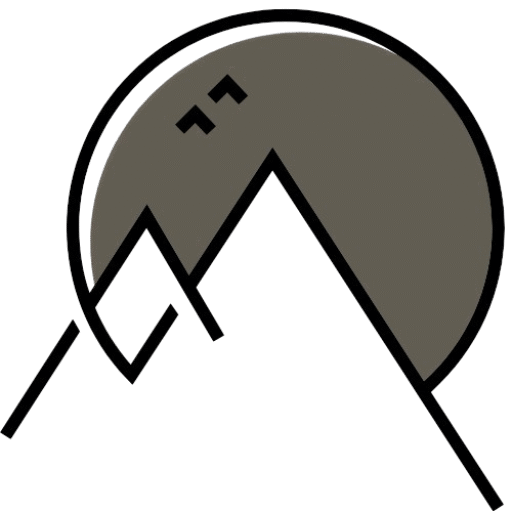Pakistan has long been a destination shrouded in misconceptions, often reduced to fleeting headlines or travel myths. But those who’ve managed to venture here know it is a land of contrasts – a place where ancient trade routes intersect modern metropolises, and rugged mountain valleys coexist with sprawling deserts. Picture centuries-old forts, winding bazaars, and breathtaking landscapes that shift dramatically from the lush north to the arid south.
Born and raised in Pakistan, I’ve traveled extensively across its cities, valleys, and mountain trails. Every time I look for trip planning resources, I see the same cookie-cutter content, often written by outsiders profiting off Pakistan without benefiting its communities. This guide is my way of bridging the gap, offering practical, firsthand advice to help you plan your journey while ensuring your money supports locals. Whether you’re drawn to the chaos of Lahore, the serenity of Hunza, or the wild beauty of Skardu, this Pakistan itinerary has everything you need for a safe, enriching, and unforgettable experience.
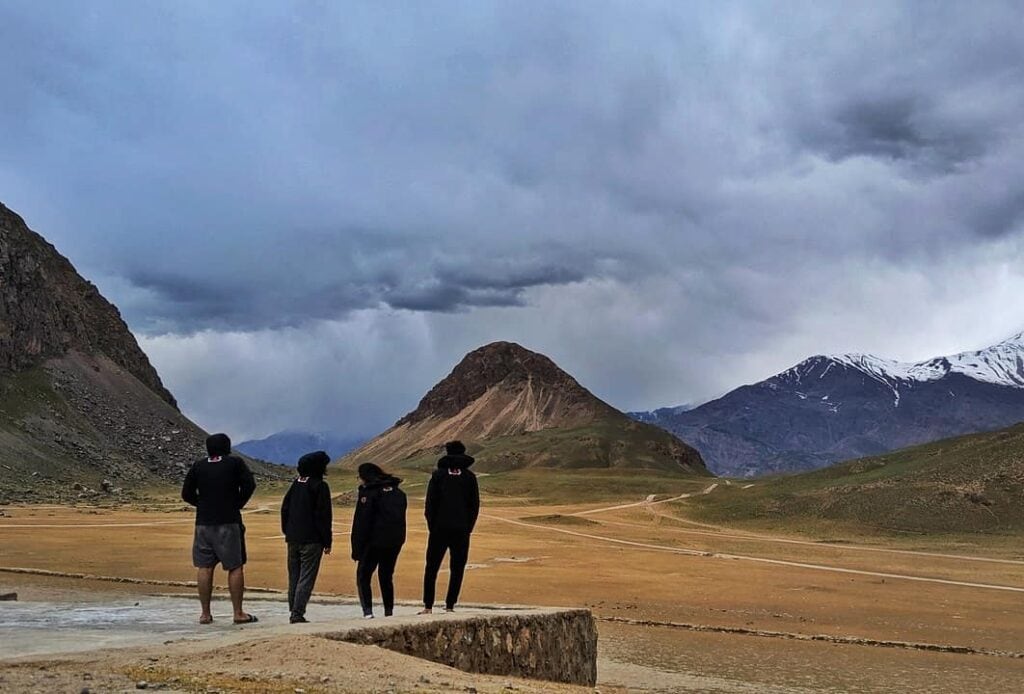
Musafir in Transit contains affiliate links and is a member of the Amazon Services LLC Associates Program. If you book through these links I may make a small commission at zero cost to you. It helps me pay for the upkeep of this blog. Thank you! See the Disclosure Policy for more info.
Getting a visa for Pakistan
A few years ago, Pakistan made traveling much easier by introducing an e-visa system. Most nationalities can now apply for an e-visa through the NADRA website, with options for single-entry or multiple-entry visas, often valid for up to a year.
You’ll need a Letter of Invitation (LOI) to complete your visa application. While some embassies may accept an itinerary or hotel booking instead, it’s rare. Most travelers purchase an LOI from tour companies for a small fee. If you’re a friend or acquaintance reading this, feel free to email me—I’d be happy to help!
Once in Pakistan, you can extend your visa online for about $20. Keep your LOI handy, as extensions often require it.
Arriving in Pakistan
Almost every visitor arriving in Pakistan comes by air. The country has three major international airports: Islamabad, Lahore, and Karachi. Where you choose to land depends on your flight route and which region you plan to explore. For a focus on the mountainous areas in northern Pakistan, Islamabad is the most convenient entry point.
Pakistan does not have many direct flights. Depending on where you are coming from, you will likely be connecting through the Middle East, Malaysia, or Bangkok.
Other methods of arriving in Pakistan include overland routes. The Wagah Border from India and the Taftan Border from Iran are open for travelers. Since 2024, the Khunjerab Pass from China is also accessible, though it remains closed in the winter.
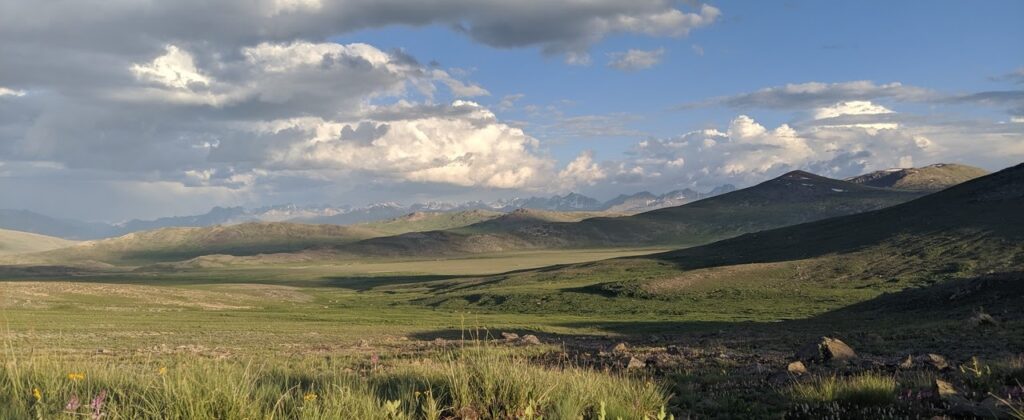
Best time to visit Pakistan and its mountains
You can ‘technically’ visit Pakistan any time of the year. But practically speaking, the best time depends on what you want to experience. For this itinerary, focused on exploring the mountains of northern Pakistan, timing matters.
The best season to trek in Gilgit-Baltistan is summer (May to July), when the weather is warm, trails are accessible, and high-altitude passes are free of snow. The shoulder months—spring (March-April) and autumn (September-October)—are also excellent. Spring brings cherry blossoms in the north, while autumn paints the valleys in shades of gold. Avoid August, though—it’s monsoon season, and the flooding has only gotten worse in recent years thanks to climate change.
Winter (November to February) buries the north in snow, making trekking nearly impossible. While you do have skiing options, I don’t think it should be what your first trip to Pakistan should be about. (Yes, you are bound to come back once you see the mountains here). Cities like Lahore or Karachi are pleasant during this time, but this isn’t ideal for a mountain-heavy trip. The southern regions, like Sindh and Balochistan, experience scorching heat in summer, so they’re best avoided during that time as well.
Ramadan in Pakistan
If you’re planning your trip during Ramadan—a holy month of fasting for Muslims—be prepared for changes. In 2026, Ramadan is from mid Februrary to mid March. Many restaurants, shops, and public transport services operate on reduced schedules during this time.
That said, evenings during Ramadan come alive with bazaars, iftar meals, and a festive energy. If you’re in cities like Lahore or Karachi, you’ll find plenty of delicious street food and bustling markets after sunset. However, in smaller towns or remote areas, services may be harder to find.
Generally, I’d recommend avoiding Ramadan unless you’re comfortable with the cultural adjustments.
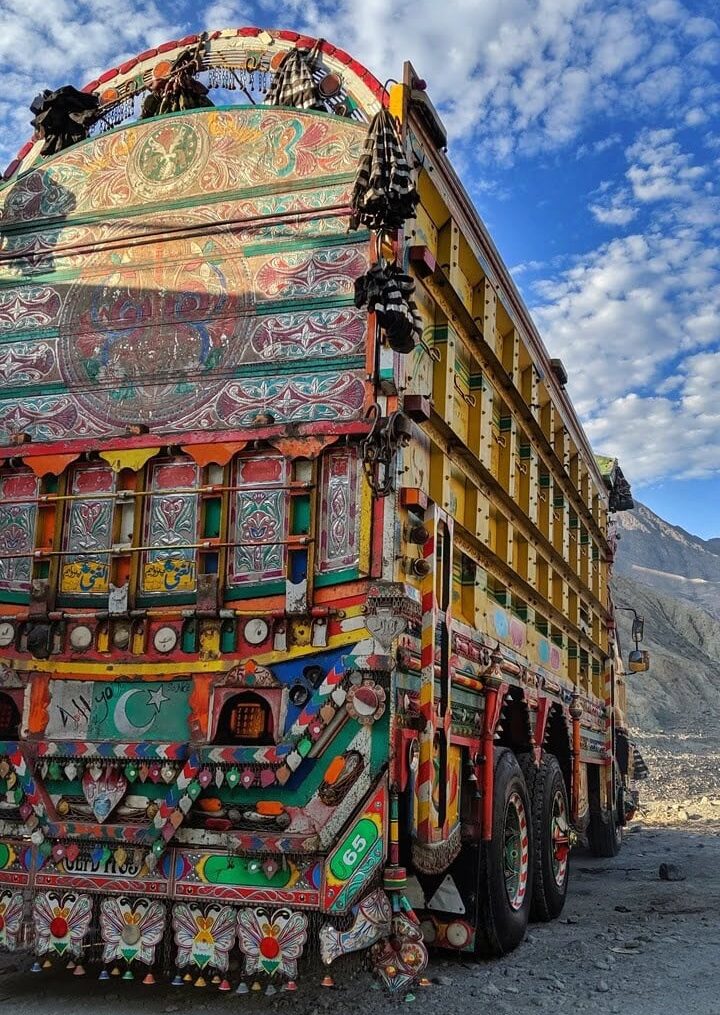
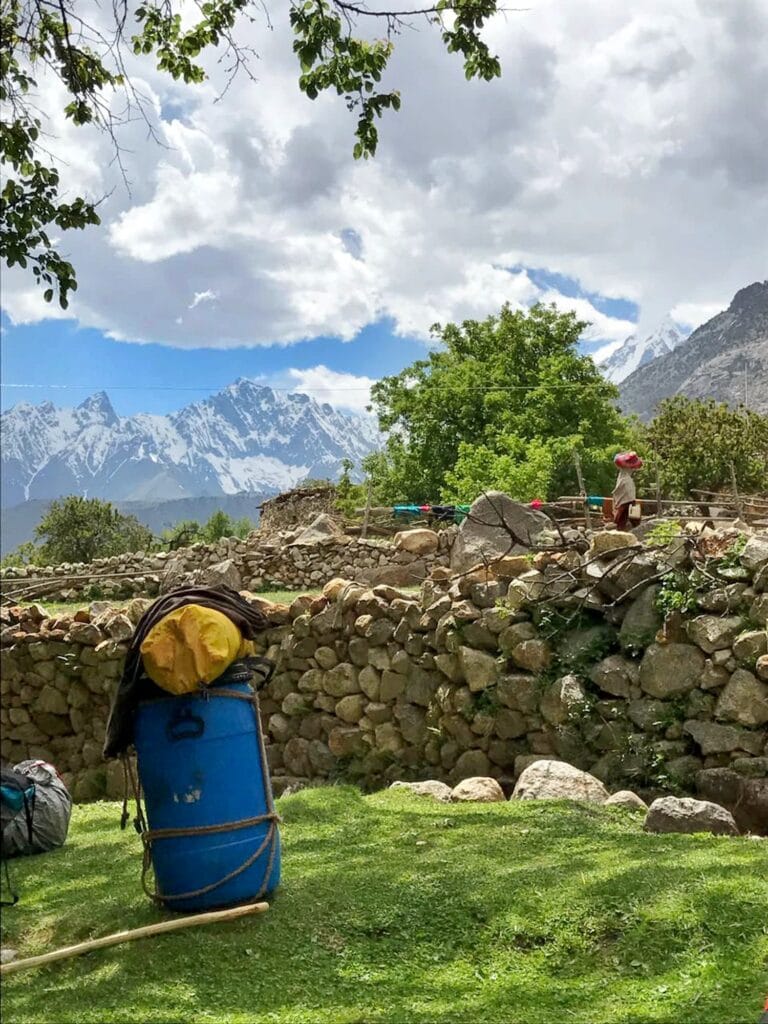
How many days do you need in Pakistan?
Pakistan is a big country, and even if you narrow down the places you want to visit, there’s still a lot of ground to cover. Add in the fact that it’s a developing country with imperfect infrastructure, and you’ll quickly realize that getting around can take time. Weather in the mountains is unpredictable, flights are often delayed or canceled, and sometimes you’ll find yourself on a 15-hour road trip to reach your destination. It might sound extreme, but this is just part of the adventure in Pakistan.
For this reason, I recommend setting aside at least 20 days for your trip. Not only does this give you time to explore the highlights, but it also leaves room for the inevitable hiccups. Whether it’s a canceled flight, bad weather, or simply needing a day to recover from all the excitement, buffer days are essential here. If you’re making the journey this far, take your time. Slow travel allows you to truly experience Pakistan—its breathtaking landscapes, welcoming people, and unexpected moments. Trust me, it’s worth it.
Getting Around in Pakistan
Transport in Pakistan can be challenging, but with some planning, it’s manageable. Within cities, ride-hailing apps like Uber or Careem are your best bet. They’re reliable, safer than public buses or minibuses, and relatively affordable. While some bloggers might suggest using motorcycle rides through these apps, I personally have reservations. Motorcycles were my go-to in Southeast Asia, but in Pakistan, I’d recommend sticking to cars. Maybe it’s because I understand the local culture better, but using a car feels safer and more comfortable.
For traveling between cities, domestic flights are the easiest and quickest option, especially for reaching northern regions like Gilgit or Skardu. However, flights to these areas are often delayed or canceled due to unpredictable weather. If you’re on a budget, buses are a good alternative. Companies like Daewoo offer reliable and comfortable service between major cities, while NATCO buses are your best bet for northern regions, though they’re slower. I have a detailed post coming up on how to get from Islamabad to Hunza by road.
Once you’re in the north, you’ll need to hire a driver or rent a car with a driver. Driving in Pakistan can be chaotic, and most rental services don’t include insurance, so having a local driver is a safer choice. If you’re adventurous and experienced, renting a motorcycle can be a thrilling way to explore. Karakoram Bikers in Gilgit are a popular choice. I personally have no experience with them so cannot vouch for it.
Public transport, such as minibuses and trains, is unreliable and often time-consuming. Unless you have a lot of time or are traveling very short distances, I’d recommend avoiding it altogether.
For this itinerary, I suggest ride-hailing apps in cities, flights between major destinations, and a driver or motorcycle to explore the northern regions. I’ve written a more detailed guide on transport in Pakistan to help answer all your questions—be sure to check it out!
About This Pakistan Itinerary
Let’s dive into the fun part, shall we? This Pakistan itinerary leans heavily into the mountains—because, let’s be real, that’s where the magic happens. If you’re after city or cultural deep dives, check out my other blog posts. The order of this itinerary is flexible, but here’s the thing: Islamabad will likely be your anchor point since flights to both Skardu and Gilgit operate from there. So whether you start with the cities or head straight to the mountains, it all comes down to your preference and flight schedules.
For simplicity, I’ve laid this out starting in Lahore and moving northward, but feel free to flip the order. This is designed for two weeks, but you can stretch or shrink it to fit your schedule. Just keep in mind that travel times, especially in the mountains, can be VERY unpredictable—think sudden weather changes or long stretches of bumpy roads, or a landslide that blocks all traffic.
Lahore (3 days)
Lahore is my hometown, so you’re officially on my turf here. Born and raised here, I’ve spent years navigating its chaotic streets, savoring its legendary food, and soaking in its layered history. This city is the cultural heartbeat of Pakistan, where life moves fast, flavors are bold, and every corner has a story. Walking through its streets, you’ll notice the little nuances that most visitors miss: the chaotic symphony of rickshaws honking, the smell of freshly baked naan wafting from tandoors, the leftover remnants of British colonization, and the unspoken rule that chai is the solution to all of life’s problems.
For most travelers, Lahore can feel overwhelming at first, but trust me, once you settle into its rhythm, it’s pure magic. This is a city that isn’t shy—it’s loud, unapologetic, and endlessly charming from the narrow alleyways of the Walled City to the wide tree-lined boulevards of Gulberg.
I would recommend keeping at least three days here to experience it all, even if you are itching to go to the mountains.
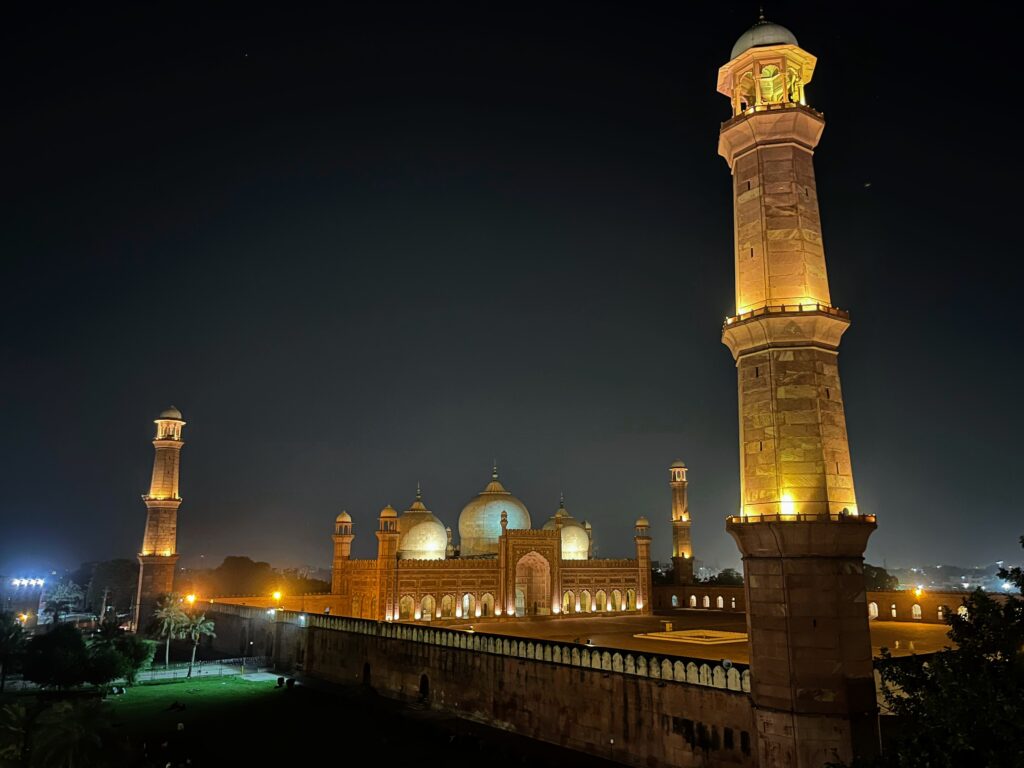
Lahore Highlights
After a lifetime of living in Lahore, here’s a very short list of must-see spots and experiences:
Badshahi Mosque and Lahore Fort | Yes, they’re iconic—and for good reason. The grandiosity of Badshahi Mosque still leaves me speechless, even after countless visits. But don’t just visit for the Instagram shots. Stay a while. Watch locals gather here for prayers or picnics in the courtyard—it’s a living, breathing piece of history.
Shahi Hammam | Tucked in the Walled City, this meticulously restored Mughal-era bathhouse is a window into the city’s ancient wellness rituals.
Walled City (Androon Sheher) | Beyond the tourist highlights like the Delhi Gate or Shahi Hammam, dive into the backstreets. The best way to experience the old city is by wandering aimlessly. Look out for traditional craftsmen, kebab stalls, and narrow alleys that seem to lead to nowhere but surprise you with a hidden courtyard.
Food Street (Fort Road) | I’ll admit, it’s a bit touristy these days, but nothing beats a late-night meal with the Badshahi Mosque glowing in the background.
Anarkali Bazaar | A labyrinth of stalls selling everything from bridal jewelry to handmade khussas (traditional shoes). Even if you’re not shopping, it’s worth a wander to soak in the chaos.
Heera Mandi | Once the hub of Lahore’s courtesan culture, it’s now a mix of fading glamour and gritty reality. It’s best visited with a guide or local who knows its history.
Gulberg and MM Alam Road | For modern Lahore, head to these areas. You’ll find trendy cafes, markets, and a mix of global and local flavors.
This list barely scratches the surface of what makes Lahore so special. Take your time here, walk slowly, and let the city show you why we Lahoris proudly say, “Lahore Lahore aye” (Lahore is Lahore).
Where To Stay In Lahore
Since Lahore is sprawling, picking the right location is key. For easy access to major attractions, here are some great options:
Luxury | Avari Hotel or The Peral Continental Lahore are two of Lahore’s most iconic hotels, with lush gardens and impeccable service.
Mid-range and Budget | Luxus Grand Hotel. A modern choice with great amenities and a central location.
I personally would not recommend trying to skimp on accommodation in Pakistan. Despite what you see online, harassment is common, especially for women – so please be careful about where you stay! I have used airbnb previously in Pakistan, but again I think it’s just better to opt for a reputable hotel.
Islamabad (3 days)
From Lahore, head to Pakistan’s capital, Islamabad—a city that feels like the opposite of Lahore. Where Lahore is vibrant and chaotic, Islamabad is meticulously planned and calm, nestled against the stunning Margalla Hills. Some might call it sterile compared to Lahore’s raw energy, but for me, that’s its charm. Islamabad offers a peaceful contrast, with clean streets, green spaces, and a relaxed pace of life.
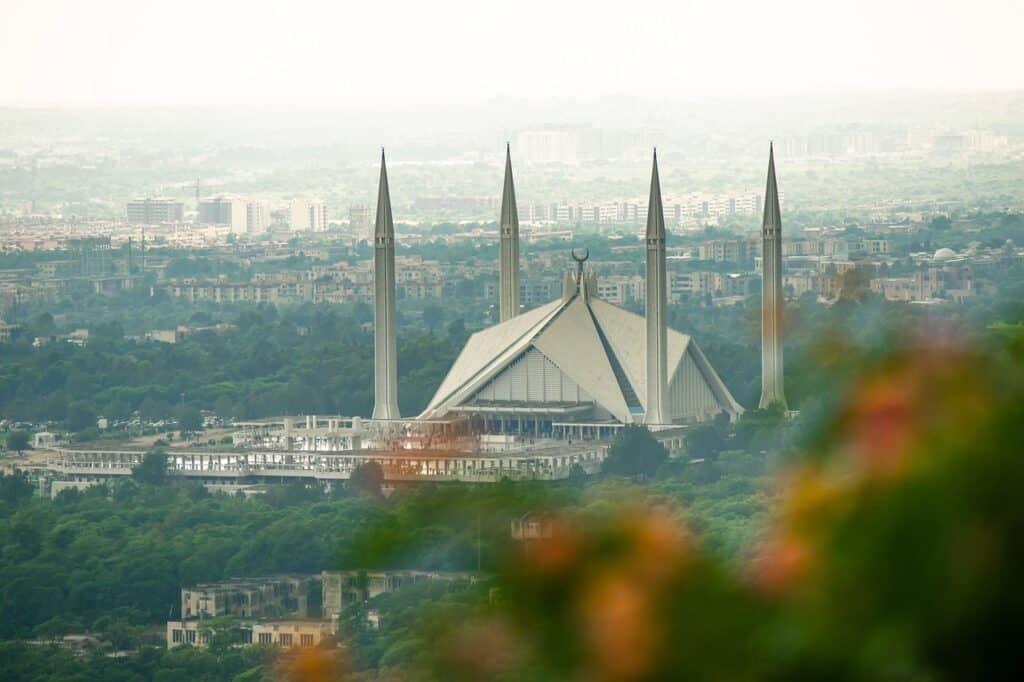
Lahore To Islamabad
The easiest way to get to Islamabad from Lahore is by road. Reliable and comfortable, Daewoo buses are a popular choice for the 5-hour, 300-kilometer journey. If you have your own car, you can make the drive more interesting by stopping at places like the Khewra Salt Mines along the way. For more ideas, check out my post on day trips from Lahore—many of the places listed fall right along this route.
Islamabad Highlights
Islamabad might lack Lahore’s hustle, but it’s packed with things to do. Here are some must-visit spots:
Faisal Mosque | Islamabad’s crown jewel and one of the largest mosques in the world. Its modern design framed by the Margalla Hills is breathtaking. For the best experience, visit at sunset to watch the changing light play off the architecture.
Lok Virsa Museum | A deep dive into Pakistan’s cultural heritage, featuring exhibits of traditional crafts, music, and art. It’s a must-visit for culture enthusiasts.
Saidpur Village | This historic village, now turned into a cultural and dining hub, is nestled in the hills. Enjoy a meal here while taking in its charming blend of old and new.
Trail 5 | If you’re up for some light hiking, this trail through the Margalla Hills offers beautiful views and a chance to connect with nature.
Monal Restaurant | Perched in the Margalla Hills, Monal is the go-to spot for dinner with a view. Head there in the evening for great food and the best cityscape views as the lights of Islamabad twinkle below.
For a more detailed breakdown of activities, check out my Islamabad guide, which has even more suggestions to make the most of your time here. Islamabad may not have the chaos and energy of Lahore, but that’s what makes it the perfect counterbalance. It’s a city where nature and modernity coexist beautifully, offering you a chance to slow down, explore, and enjoy some of Pakistan’s most scenic spots. Spend a few days here, and you’ll see why so many people fall in love with its peaceful charm.
Where To Stay In Islamabad
Luxury | Serena Hotel. Haven’t stayed here because I usually have a friends place to crash at, but I know it’s an amazing hotel if it falls in your budget.
Mid-range/Budget | Coyote Den. While I haven’t personally stayed here, it’s run by Alex Reynolds, a fellow travel blogger whose recommendations I trust completely.
Hunza (5 Days)
From Islamabad, head north to one of Pakistan’s most magical destinations: Hunza. This valley is the kind of place that makes you feel like you’ve walked straight into a post card. Think jagged, snow-draped peaks towering above lush green terraces, rivers that glisten like glass, and a sky so clear you’ll want to pinch yourself.
Hunza is one of my favorite places in Pakistan, and I have countless memories tied to it. Back in my college days, I made it a habit to visit at least twice a year, soaking in the calm, sipping apricot tea, and hiking trails that always seemed to offer something new. Five days here is perfect. Sure, you could rush through it, but why would you? Hunza is the kind of place where time slows down, and the mountains make all your problems feel minuscule.
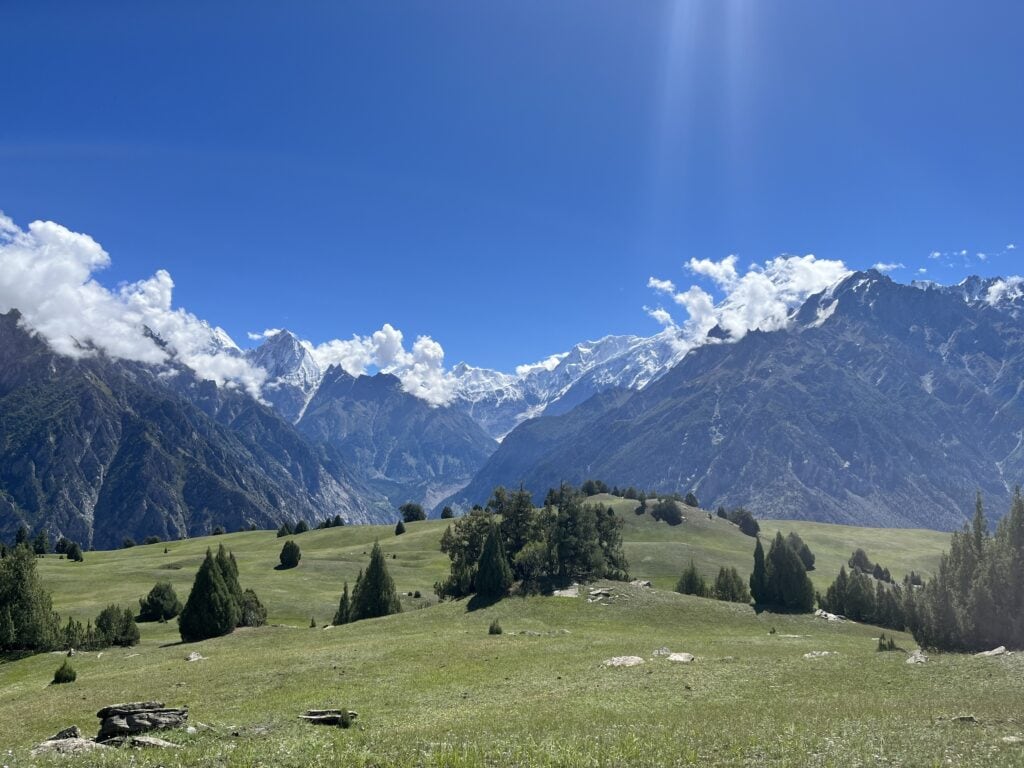
Getting To Hunza
For this itinerary, I recommend flying. Flights to Gilgit from Islamabad cut down travel time significantly, but they are weather-dependent and can sometimes be canceled. If you want detailed information on how to get to Hunza, including overland routes, check out my Hunza travel guide, which has all the logistics covered.
Hunza Highlights
Hunza has something for everyone, whether you’re here to relax and escape into the mountains, want good view points without the stress of hiking, or want to go on multi-day treks. For a detailed list of things to do, check out 21 Things To Do in Hunza Valley. Here’s a summary:
Karimabad | The main hub of Hunza, Karimabad is full of charm. Wander its streets, visit Baltit Fort, and enjoy jaw-dropping views of Rakaposhi and Ultar Sar from almost anywhere in town.
Eagle’s Nest | A short drive or ambitious hike from Karimabad, this viewpoint offers some of the most stunning panoramic views in the valley. It’s best at sunrise or sunset, so plan accordingly.
Passu Cones | These jagged peaks are one of Hunza’s most iconic sights. Take your time here—snap photos, enjoy the silence, or hike along the nearby Passu Glacier.
Attabad Lake | Created by a landslide in 2010, this turquoise lake is as beautiful as it is surreal. Rent a boat and paddle out into the calm waters to fully appreciate its beauty.
Hussaini Suspension Bridge | Not for the faint-hearted, this wobbly suspension bridge is an adventure on its own. Even if you don’t cross it, the surrounding views are worth the trip.
Hiking Options | From the challenging Ultar Glacier trek to the scenic Rush Lake trail, there’s something for everyone. For easier hikes, try the Duikar Viewpoint. There are countless multi-day hike options if you are basing out of Hunza. Some of my favourites are Nanga Parbat base camp and Khun Meadows.
Where To Stay In Hunza
Hunza offers a range of accommodations to suit different budgets. Here are some of my recommendations:
Luxury | Serena Hotel Hunza. With its manicured gardens, unbeatable views, and top-notch service, this is where you treat yourself.
Mid-range | Hiraya Resorts and Hunza Lounge. The first is in Aliabad, the latter is in Karimabad.
Skardu (4 days)
If Hunza feels like a dream, Skardu is like stepping onto another planet. With its dramatic mix of rugged mountains, turquoise lakes, and cold deserts, Skardu challenges everything you thought a mountain valley could be.
While Skardu town is charming, I wouldn’t recommend spending all your time there. It’s best used as a base to venture out and explore the surrounding landscapes. If you’re pressed for time or prefer a slower pace, you might consider picking between Hunza or Skardu for your trip. Both are incredible in their own way, and I don’t think I can help you decide which one to pick.

Getting to Skardu
The journey to Skardu is an adventure in itself. If you’re coming from Hunza, the drive is long—about 10-12 hours depending on road conditions—but incredibly scenic. The route winds through some of the most remote and stunning parts of Pakistan.
If you’re traveling from Islamabad, flying is by far the best option. The flight to Skardu is one of the most scenic in the world, offering jaw-dropping aerial views of Nanga Parbat and the Karakoram Range.
Skardu Highlights
Skardu is full of places that will leave you awestruck. If you’re planning a longer stay in Skardu, read my full guide on Skardu.
Here are the highlights:
Shangrila Resort and Lower Kachura Lake | This picturesque lake is perfect for a relaxing day. Sip chai by the water, take a boat ride, and soak in the serenity.
Deosai National Park | Known as the “Land of Giants,” this high-altitude plateau is a must-visit. If you’re lucky, you might even spot a Himalayan brown bear. The untouched beauty of this park is unforgettable.
Satpara Lake | A tranquil turquoise lake just outside Skardu town. It’s a lovely spot for a quiet picnic or a peaceful stroll.
Katpana Desert | Where else can you find sand dunes surrounded by towering mountains? The cold desert of Katpana is surreal and offers some of the most unique photo opportunities.
Skardu Fort (Kharpocho Fort) | Perched on a hill overlooking the valley, this centuries-old fort offers panoramic views and a glimpse into the region’s history.
Shigar Fort | A beautifully restored 400-year-old fort that doubles as a boutique hotel and museum. Even if you don’t stay here, it’s worth a visit to see its stunning architecture.
Hiking Opportunities | Skardu is a trekker’s paradise, offering trails for every skill level. From exploring nearby valleys to more challenging hikes like the trek to K2 Base Camp, the options are endless.
Where To Stay In Skardu
Skardu offers a range of accommodations for every budget. Here are my top picks:
Luxury | Serena Shigar Fort. A unique and luxurious experience in a restored fort with modern amenities and breathtaking views.
Mid-range | Baltistan Fort Skardu. Centrally located with comfortable rooms and fantastic
What To Know Before You Go
Let’s shift focus to some practicalities—social etiquette, budgeting, and safety tips. These are just as important as the itinerary itself, helping you navigate Pakistan with ease, respect, and confidence. After all, experiencing the country is more than just the places you visit—it’s also about understanding and engaging with its culture and people.
What to Wear in Pakistan
What you wear in Pakistan matters, especially for women, and it’s important to keep local cultural norms in mind. While social media might give the impression that revealing clothes are fine, the reality for locals—especially women—is much more conservative. In rural areas, wearing a shalwar kameez (traditional loose tunic and trousers) is the safest option. Even in cities, I recommend keeping a large shawl or scarf with you to cover up when needed. The goal is to dress modestly and avoid drawing attention by covering your curves as much as possible.
For men, shorts aren’t as big of an issue, but you’ll still stand out if you wear them. It’s less about disrespect and more about avoiding unnecessary stares, as clothing norms in Pakistan are stricter for women than men. Just remember: you’re in a conservative Muslim country, so modesty is key to blending in and showing respect.
Budget and All Things Money
Currency and Cash
The currency you’ll need is Pakistani Rupees (PKR). At the time of writing, the exchange rate is approximately 1 USD = PKR 280. Major cities like Lahore, Islamabad, and Karachi have ATMs and accept credit cards at many restaurants and hotels. However, in rural areas, cash is king, and you won’t find ATMs. Always keep enough cash on hand, especially when traveling to remote locations. Currency can be exchanged at banks or money exchange shops in major cities.
How Cheap Is Pakistan?
Pakistan is one of the most budget-friendly destinations you’ll come across. If you’re sticking to guesthouses, eating local food, and using buses, you can easily spend as little as $25–30 a day. However, if you’re flying, hiring private drivers, or staying in boutique hotels, your budget might increase to $50–100 a day.
While haggling is common in bazaars, keep perspective. Arguing over a few rupees with a vendor who likely earns a fraction of what you do isn’t worth it. Supporting local businesses is part of responsible travel, so let your generosity match the hospitality you’ll experience.
Is Pakistan Safe?
Safety is often the first concern for travelers planning a trip to Pakistan. While the media might paint a grim picture, the reality is far more nuanced and one that I can’t possibly answer in a few sentences.I have another post on safety in Pakistan where I try to go into details. But as a summary, most visitors find Pakistan to be incredibly welcoming, with locals going out of their way to ensure their safety and comfort.
That said, it’s wise to stay informed and exercise common sense. Stick to well-traveled routes, avoid discussing sensitive topics like politics or religion, and follow local advice. For women, traveling with a buddy or joining group tours can make the experience more comfortable.
In general, the northern regions (like Hunza and Skardu) are incredibly safe and full of welcoming communities, while larger cities like Karachi and Lahore might require more caution, especially at night. As with any destination, trust your instincts and keep emergency contacts handy.
Final Thoughts on a Pakistan Itinerary
I think for a first timer’s trip to Pakistan, this is the perfect itinerary. Unless you are coming with the aim of hiking, in which case I would suggest you spend at least one month here. 2 weeks in Pakistan barely scratches the surface of what the country has to offer. The landscapes are jaw-dropping, the history is rich, and the hospitality is unmatched. It’s not always easy—transport can be tricky, and plans can go awry—but the rewards far outweigh the challenges.
If you’re ready for an adventure that’s equal parts humbling and awe-inspiring, Pakistan would love to have you! I can vouch that it’ll be one of the most unique travel experiences. Just don’t be surprised if you’re already planning your next trip before this one ends.
Related Posts
- A Guide For Planning Your First Trip To Pakistan
- Pakistan Itinerary: A Local’s Guide to 2 Weeks in Pakistan
- 17 Historical Places of Pakistan: Lost Temples, and Epic Forts
- 17 Cool Things to Do in Islamabad: A Local’s Guide
- Is Pakistan Safe for Women to Travel (An Honest, No-BS Guide)
- 21 Things to Do in Hunza Valley
